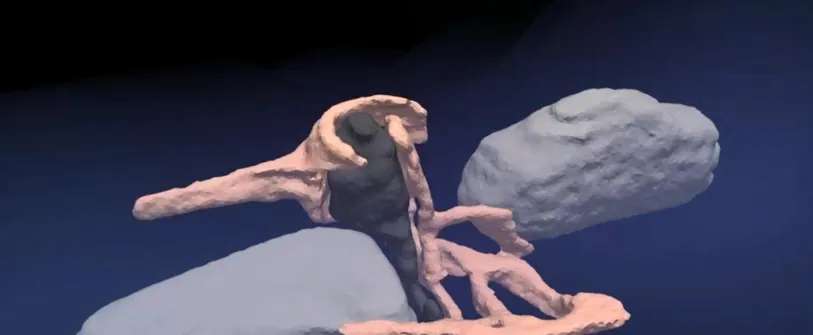
Webb Telescope Unveils Hidden Population of Small Asteroids in the Main Belt!
2024-12-22
Author: Olivia
Introduction
In a groundbreaking discovery, the James Webb Space Telescope (JWST) has identified a new population of small asteroids dwelling in the main asteroid belt, which lies between Mars and Jupiter. This revelation marks a significant advancement in our understanding of solar system dynamics and asteroid formation.
Discovery Details
A talented team from the Massachusetts Institute of Technology (MIT) utilized JWST's sophisticated infrared imaging capabilities, previously geared towards observing the star TRAPPIST-1, to spot 138 new asteroids. Ranging in size from a standard bus to a massive stadium, these asteroids were previously undetectable by traditional ground-based telescopes due to their small dimensions.
Expert Insights
Astrophysicist Tom Greene from NASA's Ames Research Center, a co-author of the study, highlighted the implications of these findings. "These discoveries greatly enhance our comprehension of the formation process of small objects within the asteroid belt and how their trajectories may evolve," Greene stated. He noted that many of these asteroids likely originated from collisions between larger asteroids and could potentially drift closer to Earth and the Sun over time.
Methodology
To achieve this remarkable feat, the research team meticulously analyzed over 10,000 images of TRAPPIST-1. These images were originally intended to study planetary atmospheres, yet they ultimately revealed faint traces of asteroids crossing the telescope's field of view. The innovative use of infrared light allowed researchers to detect asteroids that might have otherwise gone unnoticed.
Significance for Planetary Defense
Jessie Dotson, also an astrophysicist at NASA Ames and part of the agency's Asteroid Threat Assessment Project (ATAP), commented on the versatility of JWST. She remarked, "Understanding these smaller main belt asteroids gives essential context to our studies of near-Earth objects, which are critical for planetary defense initiatives."
NASA's Future Plans
These findings are a boon for NASA's Planetary Defense Coordination Office, as they assist in modeling risks associated with potential asteroid impacts on Earth. With these insights, NASA aims to devise enhanced strategies for mitigating threats posed by these cosmic objects.
Looking Ahead
Looking ahead, NASA plans to expand its use of infrared technology in asteroid observations through the upcoming Near-Earth Object (NEO) Surveyor mission. This specialized space telescope will be dedicated to detecting asteroids and comets that may pose risks to our planet.
Conclusion
The research team, led by Artem Burdanov and Julien de Wit from MIT, underscored the importance of the JWST's capability to detect faint, overlooked celestial objects. Their work lays the groundwork for further investigations into asteroid dynamics, with far-reaching implications for both scientific knowledge and planetary safety.
Final Thoughts
This astonishing discovery is just a glimpse of what the James Webb Space Telescope can achieve, paving the way for deeper explorations of our solar neighborhood! Stay tuned for more updates as we continue to uncover the mysteries of our cosmic companions!









 Brasil (PT)
Brasil (PT)
 Canada (EN)
Canada (EN)
 Chile (ES)
Chile (ES)
 España (ES)
España (ES)
 France (FR)
France (FR)
 Hong Kong (EN)
Hong Kong (EN)
 Italia (IT)
Italia (IT)
 日本 (JA)
日本 (JA)
 Magyarország (HU)
Magyarország (HU)
 Norge (NO)
Norge (NO)
 Polska (PL)
Polska (PL)
 Schweiz (DE)
Schweiz (DE)
 Singapore (EN)
Singapore (EN)
 Sverige (SV)
Sverige (SV)
 Suomi (FI)
Suomi (FI)
 Türkiye (TR)
Türkiye (TR)